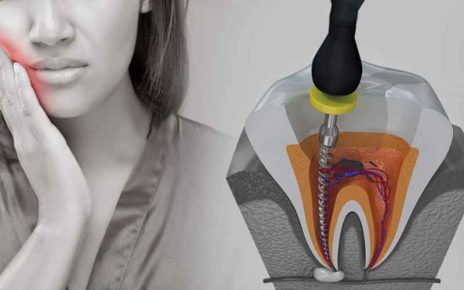Poor posture can have a huge effect on your overall health and well-being, yet it is often overlooked. Not only can it lead to physical problems such as back pain, neck pain, and headaches, but it can also cause mental health issues such as low self-esteem and depression. Poor posture can also have an effect on your productivity and efficiency, as it can lead to fatigue and decreased concentration. Although poor posture can be difficult to fix, it is not impossible, and there are a few simple steps you can take to help you improve your posture and overall health. In this article, we will explore the ugly truth about poor posture and how to fix it.
What Causes Poor Posture?
Poor posture is usually caused by lifestyle habits, such as slouching in your chair, standing with your weight on one foot, wearing the wrong type of shoes, or carrying heavy items in an awkward position. Poor posture can also be caused by muscle imbalances, such as when a muscle group is overused or underused. This can lead to a decrease in flexibility and a weakening of the muscles, which has a direct impact on your posture.
Additionally, poor posture is sometimes caused by medical conditions such as scoliosis, which is an abnormal curvature of the spine. Other medical conditions such as osteoporosis and arthritis can also cause poor posture.
Warning Signs of Poor Posture
Poor posture can cause a variety of physical and mental health issues and it is important to be aware of the warning signs. While poor posture can be physically observed, it can also cause pain and discomfort in the neck, shoulders, and back, not to mention headaches and fatigue. In some cases, it might even cause breathing problems, as the chest and rib cage cannot expand properly when the body is in a slumped position.
The Ugly Truth About Poor Posture
In addition to the physical consequences, in some cases, poor posture can lead to mental health issues such as low self-esteem, depression, and anxiety. It can also have an effect on your productivity and efficiency, as it can lead to fatigue and decreased concentration.
How to Improve Poor Posture
Improving poor posture can be a difficult process, but it is possible. There are a few simple steps you can take to help improve your posture and overall health.
- Awareness: The first step is to become aware of your posture and how it affects your body. Pay attention to how you sit, stand, and move, and make sure you are aware of any pain or discomfort. This will help you to identify any bad habits that are causing you problems.
- Conscious Effort: The next step is to make sure you are engaging in proper posture when sitting, standing, and walking. Make sure your head is up, your shoulders are back, and your back is straight. Additionally, make sure your hips are in line with your shoulders and your feet are flat on the ground.
- Corrective Exercise: The third step is to start doing posture correction exercises. These can help to strengthen and stretch the muscles that support your posture, as well as improve your flexibility and balance. Examples of posture correction exercises include wall sits, planks, yoga poses, and stretches.
- Supportive Shoes: The fourth step is to make sure you are wearing supportive shoes. Supportive shoes can help to reduce the strain on your feet and ankles, as well as improve your posture.
- Take Breaks: The fifth step is to make sure you are taking regular breaks from sitting. Sitting for extended periods of time can cause your posture to become strained and uncomfortable, especially if the chair you use is not designed for prolonged use. So consider upgrading to an ergonomic sciatica chair and make sure to take regular breaks throughout the day to stand up, move around, and stretch.
Posture Correction Exercises
Posture correction exercises can help to improve your posture and overall health. Here are a few exercises you can do to help improve your posture:
- Wall sits: Wall sits are a great way to strengthen the muscles that support your posture. To do a wall sit, stand with your back against a wall and bend your knees until they are at a 90-degree angle. Hold this position for 30 seconds & then stand up.
- Planks: Planks are a great way to improve your posture and strengthen your core muscles. To do a plank, lie on your stomach and prop yourself up on your elbows and toes. Make sure your back is straight and your core is engaged. Hold this position for 30 seconds and then relax.
- Yoga poses: Yoga poses can help to improve your posture and flexibility. Examples of yoga poses that can help to improve your posture include the cobra pose, the triangle pose, and the downward-facing dog pose.
- Stretches: Stretching can help to improve your posture and reduce pain and discomfort. Examples of stretches that can help to improve your posture include shoulder stretches, neck stretches, and chest stretches.
Benefits of Good Posture
Good posture has many benefits, both physical and mental. Good posture can help to improve your overall health and well-being, as well as reduce pain and discomfort. Good posture can also help to improve your breathing, as well as your balance and coordination. Additionally, good posture can help to improve your mental health, as it can lead to increased confidence and self-esteem. Good posture can also help to improve your productivity and efficiency, as it can help to reduce fatigue and increase concentration.
Conclusion
Although poor posture can be difficult to fix, it is not impossible. There are a few simple steps you can take to help improve your posture and overall health, such as becoming aware of your posture and how it affects your body, engaging in proper posture throughout the day, and doing posture correction exercises. Additionally, make sure you are wearing supportive shoes and taking regular breaks from sitting. By following these tips, you can improve your posture and overall health.





